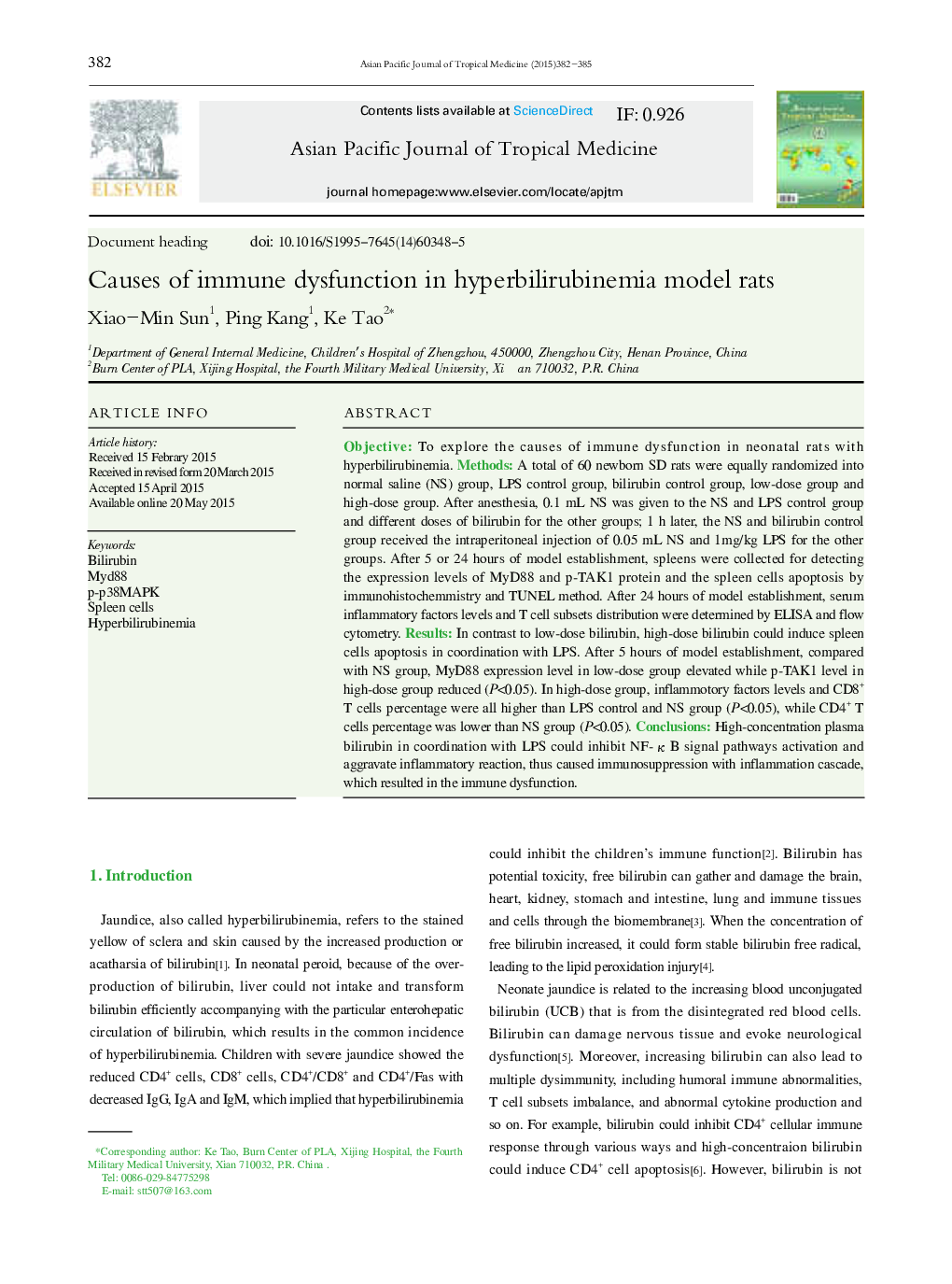| کد مقاله | کد نشریه | سال انتشار | مقاله انگلیسی | نسخه تمام متن |
|---|---|---|---|---|
| 3455382 | 1596016 | 2015 | 4 صفحه PDF | دانلود رایگان |
ObjectiveTo explore the causes of immune dysfunction in neonatal rats with hyperbilirubinemia.MethodsA total of 60 newborn SD rats were equally randomized into normal saline (NS) group, LPS control group, bilirubin control group, low-dose group and high-dose group. After anesthesia, 0.1 mL NS was given to the NS and LPS control group and different doses of bilirubin for the other groups; 1 h later, the NS and bilirubin control group received the intraperitoneal injection of 0.05 mL NS and 1mg/kg LPS for the other groups. After 5 or 24 hours of model establishment, spleens were collected for detecting the expression levels of MyD88 and p-TAK1 protein and the spleen cells apoptosis by immunohistochemmistry and TUNEL method. After 24 hours of model establishment, serum inflammatory factors levels and T cell subsets distribution were determined by ELISA and flow cytometry.ResultsIn contrast to low-dose bilirubin, high-dose bilirubin could induce spleen cells apoptosis in coordination with LPS. After 5 hours of model establishment, compared with NS group, MyD88 expression level in low-dose group elevated while p-TAK1 level in high-dose group reduced (P<0.05). In high-dose group, inflammotory factors levels and CD8+ T cells percentage were all higher than LPS control and NS group (P<0.05), while CD4+ T cells percentage was lower than NS group (P<0.05).ConclusionsHigh-concentration plasma bilirubin in coordination with LPS could inhibit NF-κB signal pathways activation and aggravate inflammatory reaction, thus caused immunosuppression with inflammation cascade, which resulted in the immune dysfunction.
Journal: Asian Pacific Journal of Tropical Medicine - Volume 8, Issue 5, May 2015, Pages 382-385
